A slightly spicy and creamy pesto sauce from Calabria
Pesto Calabrese is a delicious recipe from Calabria. Although some of the ingredients are cooked, this creamy sauce is eaten cold or just heated when mixed with cooked pasta. It's also really good as a dip or on bruschetta!

Pesto Calabrese will add spice to your pesto life!
This recipe will spice up your pesto life. Pesto Calabrese is a cold creamy sauce made from ripe tomatoes, red bell peppers and ricotta. It’s slightly or very spicy, depending on your preferences, because of the edition of Calabria’s famous peperoncino and very aromatic.

This is not actually an old traditional Calabrian recipe but includes typical ingredients from Calabria and has become very popular here in Italy. So much so, that Barilla and other companies make and sell it as a ready sauce. Although Barilla’s version doesn’t include ricotta.
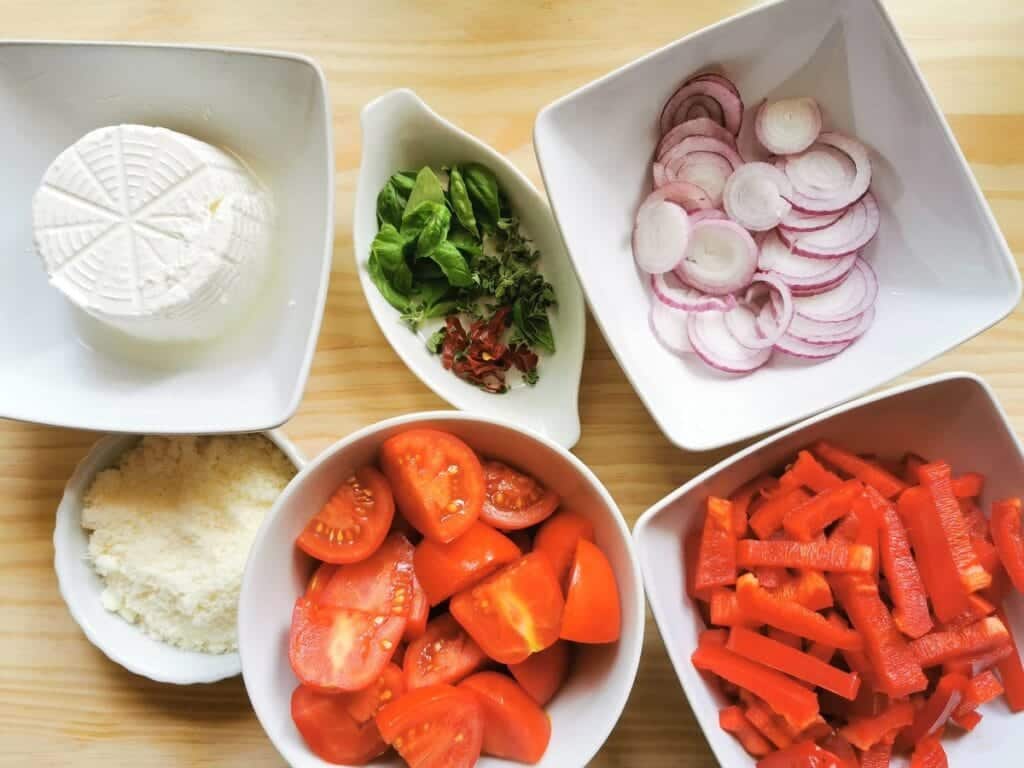
A little pesto history.
In Italian, the word pesto derives from the verb 'pestare' meaning to pound or crush. The original recipe for pesto comes from Liguria, home to pesto Genovese or basil pesto. That pesto is traditionally made using a pestle and mortar. So the word pesto and the English 'pestle' derive from the same source! Nowadays, many Italians prefer to use a food blender or processor to make pesto.

Although basil pesto is the oldest and most well-known type of Italian pesto, there are other versions, particularly in the Southern Italian regions. Apparently, it was the Genovese sailors who introduced pesto to the Southerners. They in turn invented their own versions of this popular sauce, using local ingredients.(see links below for other pesto recipes)
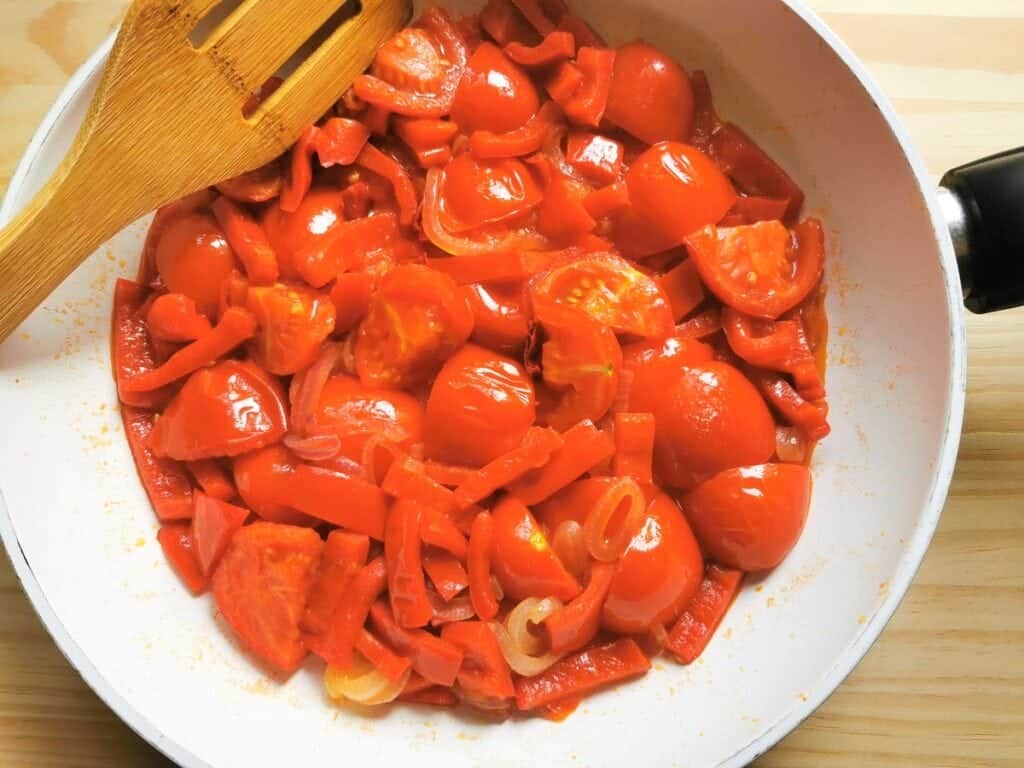
Pesto Calabrese is made with some cooked ingredients.
Unlike other types of pesto, pesto Calabrese is made with some cooked ingredients. The onion, red bell peppers and tomatoes need to be cooked before you blend them with the cheeses. I have seen some recipes in which they suggest blending all the ingredients raw and then cooking the sauce for 10 minutes in a small saucepan. But I prefer to do it as in this recipe.

Other versions of pesto Calabrese.
There are also a number of other versions of pesto from Calabria. Some include eggplant or different kinds of onions or Parmigiano, or a combination of these. I have also come across another type of pesto Calabrese made with olives and sundried tomatoes.


However, the most common ingredients are ripe date or vine tomatoes, a red capsicum pepper, Pecorino cheese, red tropea onion, a good quantity of peperoncino (red chilli pepper) to give it that Calabrian kick and fresh ricotta to offset the sharper flavours of the other ingredients.
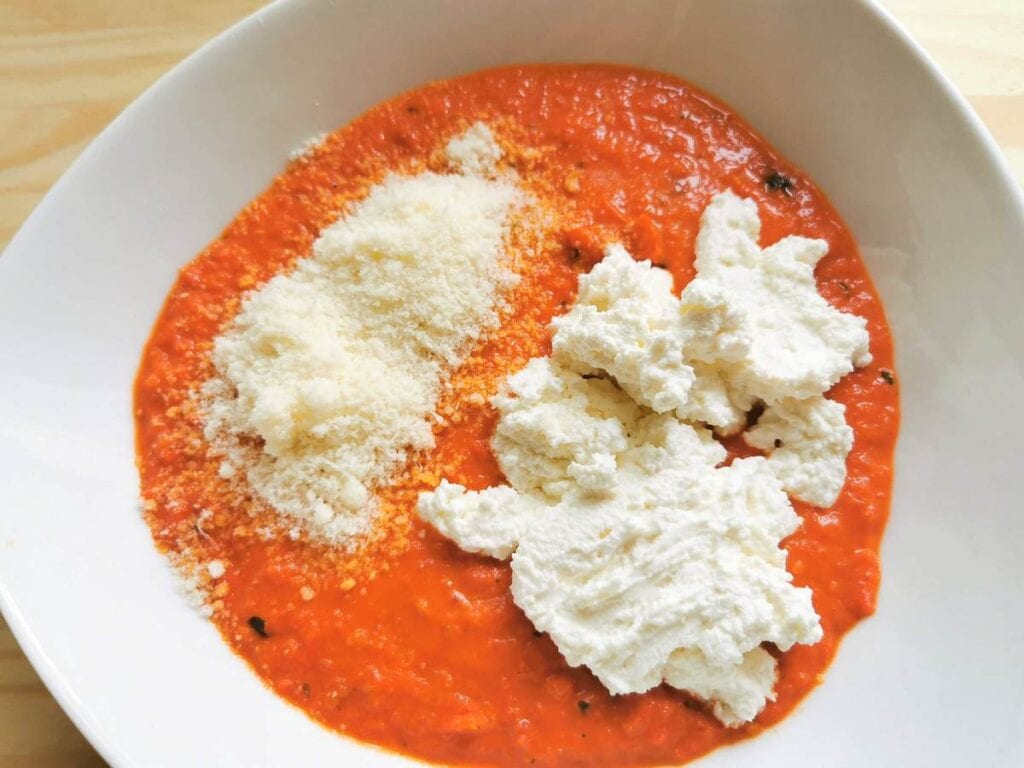
Like all simple recipes, especially those using fresh foods, high-quality ingredients are important and will make all the difference. To get the best result use juicy but ripe vine tomatoes, crisp unwrinkled red bell peppers, Calabrian peperoncino (fresh or dried), fresh Italian ricotta and, if available, Tropea onions.

The pasta
I used long squiggly fusilli for this recipe. I just love this pasta and its perfect with creamy sauces! However, you can use any of your favourite pasta shapes. I've seen recipes for pesto Calabrese with penne, rigatoni, spaghetti, short fusilli and farfalle. So, I think anything goes!

Other ways to make and serve pesto Calabrese
Pesto Calabrese is known as a red pesto. However, although I haven't tried it, this can be made in a green version too. Just use green capsicums, green tomatoes and green peperoncino. You can also prepare a good quantity of this sauce and freeze it in small portions, so you have it ready for other meals.

This pesto is also fabulous as a dip or on bruschetta or even with meat or cheese. So, if you make enough you can try serving it in different ways to see which you like best. Whichever way you serve it I’m sure it will become a firm favourite!

If you make this recipe I’d love to hear how it turns out and if you liked it. Please leave a comment here on the blog or on The Pasta Project Facebook page. Looking forward to hearing from you!
Buon appetito!
This recipe was first published in 2017 but has been updated with new photos and text.
Take a look at these other pesto recipes.
- Pistachio pesto from Sicily
- Pesto Trapanese with busiate
- Basil pesto lasagna
- Linguine with mint pesto and ricotta cream
- Sicilian pesto
SAVE THIS RECIPE FOR LATER?
If you want to save this creamy pesto Calabrese recipe for later, you can print it, bookmark this page or save it to Pinterest.

Want to know more about my life in Italy? Why not subscribe to my newsletter? New subscribers get a free series of recipe e-books too!
If you are interested in learning how to make homemade pasta and different types of gnocchi, check out my shop page for some great video online courses from my friends in Rome! Nothing beats learning to make pasta from Italians! Plus while you’re there why not order a copy of one of my pasta recipe cookbooks!?



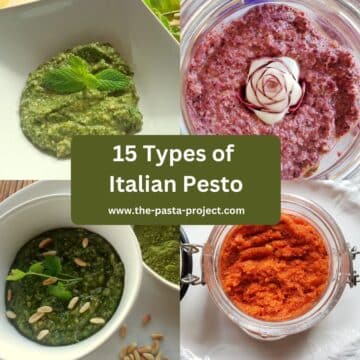




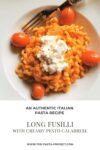

Steve says
I found it at ingles
Heidy says
I love your pasta recipes, and this one has become a favorite---all those delicious flavors in one pasta! Thanks for sharing an awesome recipe! Happy Sunday/Monday!
Moop Brown says
This is definitely a recipe I need to try as it seems perfect for summer and incredibly authentic.
Kim @ Three Olives Branch says
Delicious! This reminds me of a pasta that means so much to me that I had at a restaurant in another state. I am so happy I can make this myself now.
Jagruti's Cooking Odyssey says
Another delicious pasta recipe for me to try out very soon, love pasta and pesto, and pesto calabrese is so tempting!
Alex says
I didn't know long squiggly fusilli was a thing! I need to look for that. Thanks for the brand tip. And then I can't wait to make this!
Erin says
I love how you include the history! It's always interesting. And wow, this looks exquisite! Something we need to try soon.
Leslie says
Another great pasta recipe! I'm loving this Pesto Calabrese recipe you have created. Nothing better than a homemade, pasta recipe!
Linnda says
Such beautiful pasta! Love every bite of this fusilli pasta as I am always eager to try a new recipe
Anaiah says
This fusilli pasta with pesto calabrese was soo flavorful and delicious! It was the perfect dinner to make for my family who came to visit.
Roy says
I can never have enough of pesto and its variations. In fact I was just searching for an authentic version to this, I clicked your blog and there it was!!! Thanks a bunch! Would love to see you do a post on the many variations of pesto someday.
Heather says
I love all of the different ways you can serve this pesto! Thanks for the great suggestions 🙂 I'm always looking for creative ways to use the loads of pesto I have every summer and this sounds perfect.